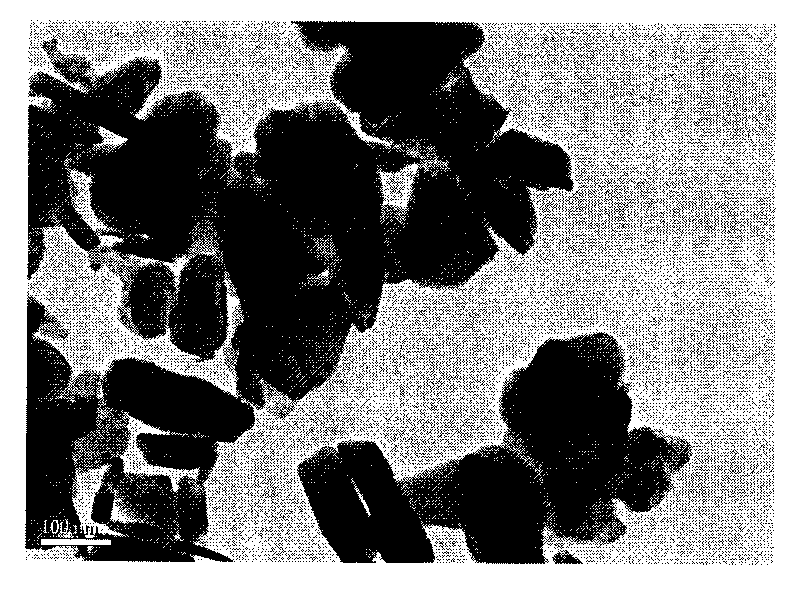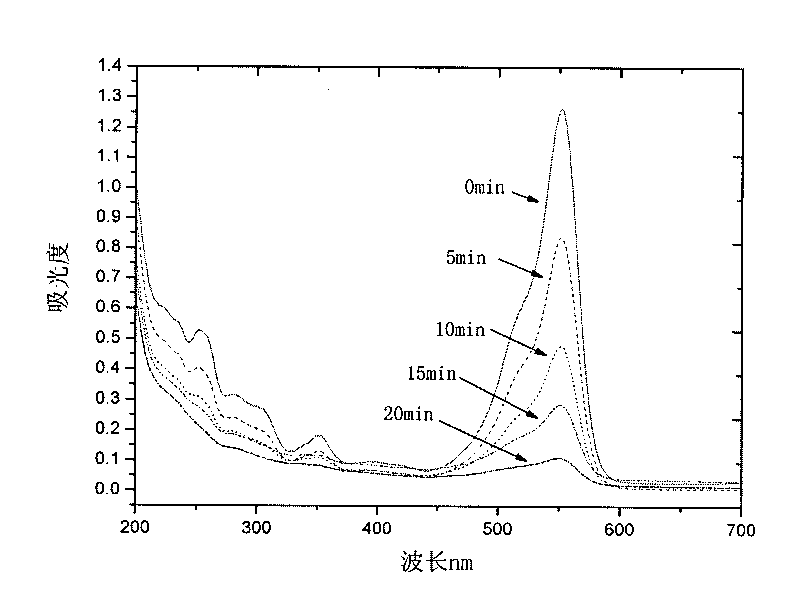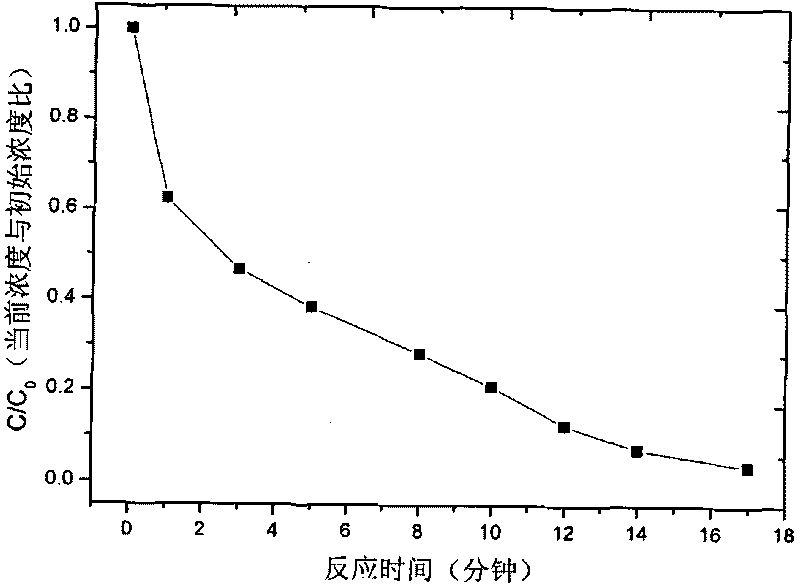Method for degradation of triphenylmethane dye wastewater
A dye wastewater, triphenylmethane technology, applied in chemical instruments and methods, water/sewage multi-stage treatment, neutralized water/sewage treatment, etc., can solve the problems of energy saving rather than degradation, low photon efficiency and high energy demand , to achieve the effect of low operating cost, high activity and simple equipment
- Summary
- Abstract
- Description
- Claims
- Application Information
AI Technical Summary
Problems solved by technology
Method used
Image
Examples
Embodiment 1
[0027] Prepare a 20mg / L rhodamine B aqueous solution to simulate triphenylmethane dye wastewater, and measure 100mL of the dye solution into a reaction bottle. A stirring bar was placed in the bottle, and the solution was stirred under the action of the stirrer. Weigh 0.2 g of the prepared silver bismuthate and add it to the above solution, and start the reaction under the action of stirring. Then measure the variation of rhodamine B concentration with the reaction time, the experimental results show that after 20 minutes, the rhodamine B concentration reduces by 91%, see for details figure 2 .
Embodiment 2
[0029] Prepare a 30 mg / L malachite green aqueous solution to simulate triphenylmethane dye wastewater, and measure 100 mL of the dye solution into a reaction bottle. A stirring bar was placed in the bottle, and the solution was stirred under the action of the stirrer. Weigh 0.25 g of the prepared silver bismuthate and add it to the above solution, and start the reaction under the action of stirring. Then measure the variation of malachite green concentration with the reaction time, and the experimental results show that after 17 minutes, the concentration of malachite green reduces by 96%. For details, see image 3 .
Embodiment 3
[0031] Prepare a 40 mg / L crystal violet aqueous solution to simulate triphenylmethane dye wastewater, and measure 50 mL of the dye solution into a reaction bottle. A stirring bar was placed in the bottle, and the solution was stirred under the action of the stirrer. Weigh 0.2 g of the prepared silver bismuthate and add it into the above reaction solution. When the reaction starts, the variation of the concentration of crystal violet with the reaction time is measured, and the experimental results show that the decolorization rate of crystal violet exceeds 86% after 36 minutes.
PUM
 Login to View More
Login to View More Abstract
Description
Claims
Application Information
 Login to View More
Login to View More - R&D
- Intellectual Property
- Life Sciences
- Materials
- Tech Scout
- Unparalleled Data Quality
- Higher Quality Content
- 60% Fewer Hallucinations
Browse by: Latest US Patents, China's latest patents, Technical Efficacy Thesaurus, Application Domain, Technology Topic, Popular Technical Reports.
© 2025 PatSnap. All rights reserved.Legal|Privacy policy|Modern Slavery Act Transparency Statement|Sitemap|About US| Contact US: help@patsnap.com



